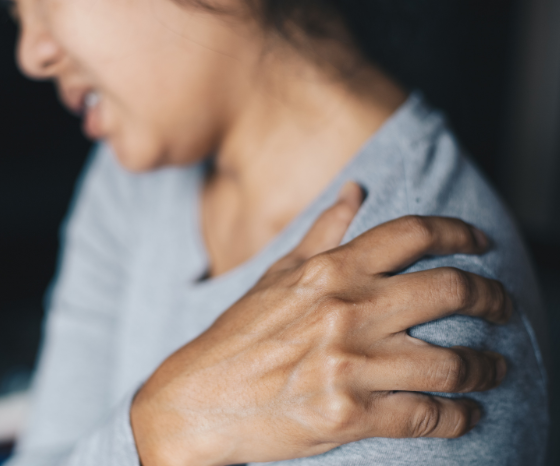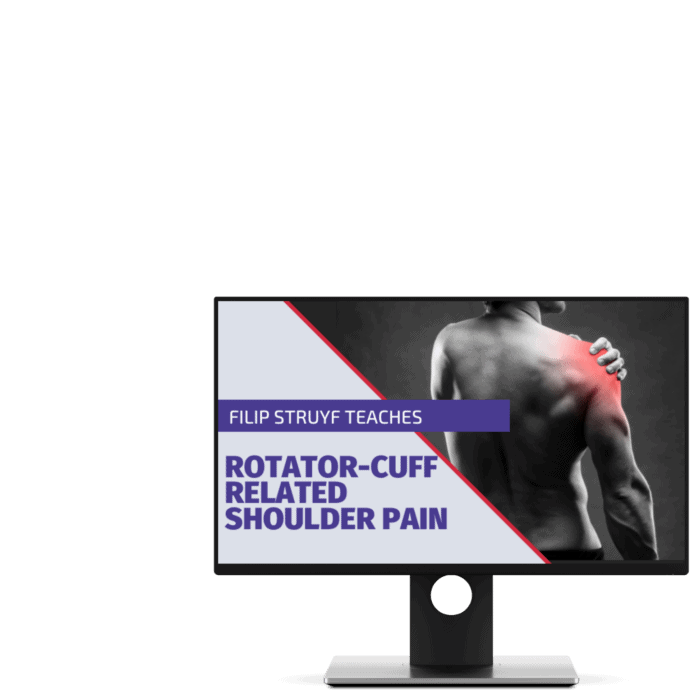Brachial Plexitis | Diagnosis & Treatment

Brachial Plexitis | Diagnosis & Treatment
Brachial plexitis, also known as neuralgic amyotrophy or Parsonage-Turner syndrome, is a rare condition that affects the network of nerves called the brachial plexus, which controls movement and sensation in the shoulders, arms, and hands. This disorder is characterized by sudden and severe pain in the affected area, followed by weakness or paralysis of the affected muscles.
Brachial plexitis can occur at any age, but it most commonly affects young adults. Despite significant research efforts, the underlying cause of brachial plexitis is not well understood, and there is currently no cure for this condition. However, with proper diagnosis and management, most individuals with brachial plexitis can recover some or all of their function over time.
Prevalence
Although it was initially thought to be rare, lack of recognition may have contributed to this belief. It affects between 2 and 3 cases per 100,000 people annually. The condition is more common in males and usually occurs after an illness or environmental factor such as strenuous activity or vaccination (Monteiro et al 2022).
Etiology
There is a fairly broad spectrum of potential causes for brachial neuritis. Infection, whether bacterial, parasitic, or viral, Coxsackie B virus, mumps, variola major and minor, HIV, and parvovirus B19 are some of the more prevalent causes that have been mentioned in the literature (Feinberg and Radecki 2010).
Surgery, anesthesia, rheumatic diseases such Ehlers-Danlos syndrome, systemic lupus erythematosus, temporal arteritis, and polyarteritis nodosa, as well as connective tissue disorders, are other factors that put individuals at risk for brachial neuritis. Other deciding factors include strenuous exercise and injuries to the shoulder girdle.
The injection of radiologic contrast dye, tetanus toxoid and antitoxin, diphtheria, pertussis, and tetanus (DPT) vaccination, smallpox, swine flu, pregnancy, and childbirth, radiation therapy, lumbar puncture, and pneumoencephalogram are additional sources.
There exists a hereditary variant as well, associated with chromosome 17q24. These patients will get recurrent attacks, triggered by the same events as the others such as recent infection (Gonzalez-Alegre et al 2002).
Symptom Course
Brachial neuritis usually includes three phases. Phase 1 involves the patient complaining of severe, typically unilateral pain that is described as aching, sudden in onset, and affects the lateral aspect of the shoulder as seen in axillary nerve involvement, scapular pain as seen in suprascapular nerve involvement, the superolateral thoracic wall as seen in anterior interosseous nerve, antecubital fossa as seen in anterior interosseous nerve, and lateral arm or forearm as seen in musculocutaneous nerve. The pain is worst at night, wakes the sufferer from sleep, and is usually not positional. The interval between the trigger and symptoms ranges from one to twenty-eight days on average, but 66% of patients report the trigger occurring within seven days.
Early detection, in accordance with van Alfen et al., enables medical intervention that can lessen the severity of the clinical course. Over a few days to weeks, the extreme pain self-limits and goes away. In general, the patient’s recovery time will be lengthier the longer the pain lasts. As the pain subsides, patients typically enter phase 2 of the condition and begin to experience painless weakness, such as weakness in the arm and shoulder girdle. The hands and forearm can also be affected, though this is far less common. Muscle atrophy also begins, but after 6 to 18 months, there typically follows a slow, steady recovery of muscle function, defined as phase 3 of the condition (van Alfen and van Engelen 2006).
According to Ferrante et al., 89% of patients made a full recovery after three years, 75% after two years, and 36% after one year. However, according to Van Alfen et al., after a median of 2.5 years, 30% of patients reported persistent discomfort, and 66% reported functional impairments. Highlighting that the condition is not self-limiting.
Follow a course
- Learn from wherever, whenever, and at your own pace
- Interactive online courses from an award-winning team
- CEU/CPD accreditation in the Netherlands, Belgium, US & UK
Diagnosis
A review by Ferrante et al stated the diagnosis is based on NMR and EMG. The syndrome is challenging to diagnose because of its varied conditions, including atypical presentations. The muscular alterations most associated with the syndrome are related to mobility, and pain can also affect the arm, elbow, and cervical spine regions. There is no consensus in the literature on which nerve is the most affected, however, more research is needed to confirm these data (Santos et al 2021). A case report by Abraham et al (2016) even suggested that the inflammation may lay outside of the brachial plexus.
The diagnosis is important because it can prevent unnecessary or unhelpful treatment pathways. Make sure to rule out other diagnoses such as rotator cuff related shoulder pain, frozen shoulder, glenohumeral osteoarthritis, acute poliomyelitis, amyotrophic lateral sclerosis, brachial plexus tumor, cervical disc disease, cervical lesions, mononeuritis multiplex, neoplastic infiltration of the brachial tube, non-traumatic compressive nerve injuries, traction injury to the brachial plexus, and traumatic compressive nerve injury, myocardial infarction, and pulmonary embolism. This list is not exhaustive.
Clinical Examination
On a physical examination, two or more nerves will often be affected. One distinctive feature that sets brachial plexus neuritis apart from other disorders is that it affects various muscles differently even though they are all innervated by the same peripheral nerve (pathy paresis). Later in the illness course, physical examination can reveal lower motor neuron symptoms (hypotonia, areflexia, atrophy, and fasciculations), particularly in the upper brachial plexus (C5,6,7). Shoulder abduction and external rotation will be reduced in cases of weakness that develops following the acute pain phase, indicating involvement of the deltoids, supraspinatus, and infraspinatus muscles. When the serratus anterior muscle is implicated when the long thoracic nerve is affected, you will have medial scapular winging.
Follow a course
- Learn from wherever, whenever, and at your own pace
- Interactive online courses from an award-winning team
- CEU/CPD accreditation in the Netherlands, Belgium, US & UK
Treatment
There is no consensus on ideal treatment modalities. Analgesics are recommended in the painful early phase, as well as immobilization of the affected limb. Nevertheless, corticosteroids do not generally affect the prognosis of brachial neuritis. They may be helpful in the acute phase and have been found to speed up the resolution of acute pain (Gonzalez-Alegre et al 2002). Exercise for the shoulder is recommended if pain allows. Other modalities have been shown to be effective in reducing pain and weakness as well as in regaining muscle trophism and functional status. This includes kinesiotherapy, transcutaneous electrical nerve stimulation, deep dermal therapy, cryotherapy, and/or functional electric stimulation. Note that there are no high quality trials in terms of management for this condition. This is due to the rare nature of the disease.
Disclaimer
The literature is exceptionally scarce on this topic. Interpret these results with caution for clinical practice and intellectual purposes.
References
Follow a course
- Learn from wherever, whenever, and at your own pace
- Interactive online courses from an award-winning team
- CEU/CPD accreditation in the Netherlands, Belgium, US & UK
Shoulder Expert Separates Fact from Fiction in All-Encompassing Online Course


What customers have to say about this course
- Tineke De Vries26/01/25Goede cursus. Goede cursus, gericht op de praktijk Veel geleerd. Met name wat betreft de opbouw van de oefeningenDempsey Thiele02/01/25Overzichtelijk en praktisch! Ik heb de cursus met plezier afgemaakt. Ik denk dat dit een relevante cursus is voor iedere fysiotherapeut die meer inzicht wil krijgen over de huidige evidence omtrent schouder rehabilitatie. Alle informatie wordt overzichtelijk aangeboden.
Ik kan weer kritisch aan de slag mijn patiënten te helpen in de toekomst! - Carlijn Duursma27/12/24Goede cursus Veel verdieping. duidelijke uitleg. misschien wat tekeningen toevoegen voor extra verduidelijking. Veel geleerd.Vanessa Burnet22/12/24Leerzame cursus Opfrissing van kennis wat is weg gezakt.
- Paul Mensink15/12/24Paul Mensink High level literature composed course, videos are perfect examples for used techniques and exercisesFrank Kleyn12/12/24CRSP Ik kan bovengenoemde cursus zeer aanbevelen , nieuwste inzichten , zin en onzin van Subacromiale ruimte , de duidelijke vertaling naar de praktijk en de behandeltafel .
- Marty26/11/24RCRSP CURSUS Niet heel veel nieuws maar wel een goed overzicht en duidelijke uitleg over biomechanica.
Goede filmpjes van Filip en technieken ook goed uitgelegd.
Goede toetsen die de lesstof vrij compleet behandeld..
Website werkt naar mijn mening niet goed. Nogal onoverzichtelijk…
Vergt wat tijd om er mee om te gaan maar voordeel van de cursus is de gunstige prijs per accreditatie punt. Netjes.maria Kramer01/11/24goede cursus voor rcrsp Goede cursus met veel praktische vaardigheden en oefeningen die je direct kunt toepassen, aanrader. - Erik Versluis13/08/24Rotator Cuff Related Shoulder Pain RCRSP by Filip Struijf
State of the art course and very useful for physiotherapists with shoulder expertise or who want to further develop their skills in research and treatment of patients with shoulder complaints. A nice addition is a shoulder case in which you can process the knowledge you have recently acquired.
A major advantage is the possibility to read the course material offered and to watch the video material again.Birgit Schmitz28/04/24Rotator Cuff Related Shoulder Pain RCRSP
Ik vond het een waardevolle cursus met onderbouwd wetenscahppelijk onderzoek dat ondersteunt in mijn praktisch handelen. Ik heb al een nieuwe cursus uitgezocht. 🙂 - Thijs de Jager22/04/24Rotator Cuff Related Shoulder Pain GOEDE RCRSP CURSUS.
Over het algemeen een goede cursus waarbij ik veel ben opgestoken. Goede, evidence based informatie met hier een daar wat uitleg video’s die zeker helpvol waren. Het is ook fijn dat je onder de cursusonderdelen vragen kan stellen en hier een antwoord op kan verwachten van Filip zelf. 4 sterren i.p.v. 5 sterren omdat ik graag meer duidelijkheid en uitleg in video format over de oefeningen had willen zien. Er worden een hoop oefeningen getoond maar het is aan de cursist zelf om te bedenken welke in te zetten in de praktijk.Larson de Neve16/04/24Rotator Cuff Related Shoulder Pain GOOD COURSE
Good theoretical and practical course with exercises that you can immediately use in practice. - Beppeke Molenaar13/04/24Rotator Cuff Related Shoulder Pain OVERALL A GREAT COURSE
This is a very informative and comprehensive course.
Some of the quiz answers that are correct are counted as incorrect, which is a pity.
(Comment Physiotutors: We are currently doing an overhaul of our quizzing system and have fixed this issue now.)Willem Zee28/01/24Rotator Cuff Related Shoulder Pain PRIMA CURSUS!
goed te doen, uiterst praktisch - Jason Pearson11/01/24Rotator Cuff Related Shoulder Pain RCRSP COURSE
Very satisfied with this course. Provides a great framework with which to build your assessment and rehabilitation strategiesMichal Wajdeczko09/01/24Rotator Cuff Related Shoulder Pain Ik ben super blij ermee.
Het was een zeer interessante training. Het cursus was rijk met ge-update informatie, alles wordt volledig en transparant uitgelegd. Ik moet ook toevoegen dat deel van nuttige sets oefeningen briljant is! Veel nuttige tips en combinaties om rotator cuff pijn te kunnen verminderen en alle spieren efficiënt te trainen. Ik ben er trots op dat ik weer mijn kennis en competenties kon ontwikkelen en om mijn patiënten een professionele benadering van schoudercomplexe aandoeningen te kunnen bieden.
Super bedankt!! - Ante Houben30/12/23Rotator Cuff Related Shoulder Pain RCRSP
This course is well designed and based on solid evidence. The information is presented in a structured manner, using text, images and videos to enhance understanding. In addition, I appreciated the course’s emphasis on effectively conveying this information to patients. However, I wished the exercise therapy was more extensive.
Naomi Tiller20/12/23Rotator Cuff Related Shoulder Pain RCRSP COURSE
Fantastic course that’s easy to follow, up to date and evidence based. I’ve immediately been able to implement what I’ve learnt in to my own work which has given me a lot more confidence as well as made it more enjoyable! A good refreshed for me on how the rotator cuff works, a better understanding of how to treat these problems and better communicate with my patients as well as exercise inspiration (always appreciated!). Overall very happy to have done this course!
Super bedankt!! - Stijn de Loof17/12/23Rotator Cuff Related Shoulder Pain GOOD THEORY, LESS EXERCESIS
I liked the theoretical part of the course. A good refresher about the shoulder and rotator cuff with new insights
I was a bit disappointed in the part ‘exercises’. They were super basic and without explinations.Mehdi Benkirane24/11/23Rotator Cuff Related Shoulder Pain REVIEW
Très bon cours, je le recommande pour se remettre à jour sur les tendinopathies de l’épaule.




